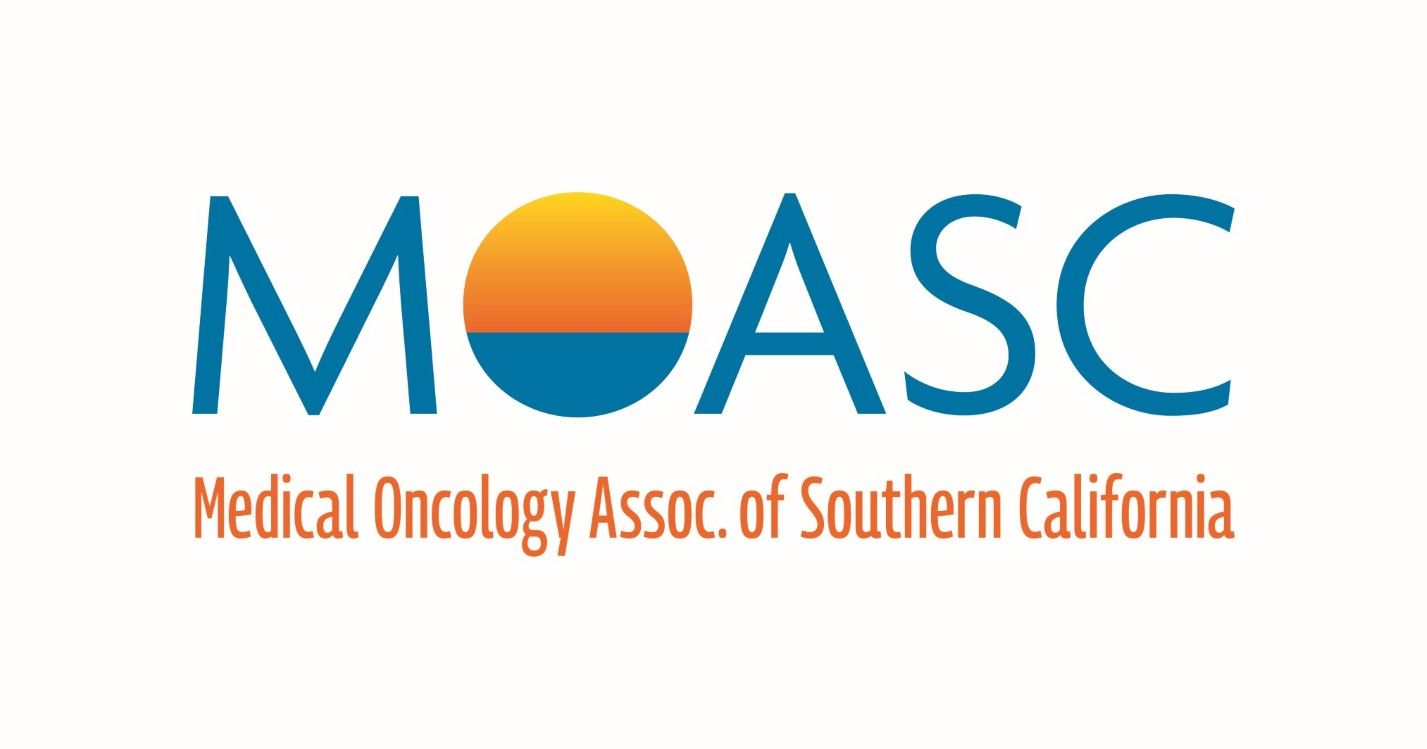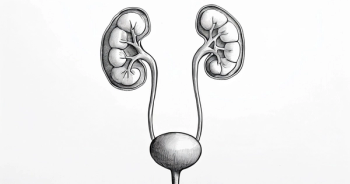
Peers & Perspectives in Oncology
- June I 2025
- Volume 3
- Pages: 86
Daud Evaluates Checkpoint Inhibitors in Advanced and Earlier Stages of cSCC

During a Community Case Forum event, Adil Daud, MD, discussed immunotherapy options for cutaneous squamous cell carcinoma.
CASE SUMMARY
- The patient is an otherwise healthy, 69-year-old man, a fair-skinned, retired construction worker.
- Presented to his primary care physician with what he described as a wound behind his ear that was not healing; he reported first noticing it at least 4 months earlier and complained of a recent onset of numbness in the area; he was referred to a dermatologic oncologist.
- ECOG performance status: 0
- The visible ulcerated lesion was 4.5 cm in diameter and greater than 5 mm thick.
- No palpable nodes
- A skin biopsy confirmed a poorly differentiated, infiltrative, cutaneous squamous cell carcinoma (cSCC) lesion, with invasion beyond subcutaneous fat; perineural involvement was noted.
- Imaging revealed an invasive primary cSCC, two 15-mm lymph nodes in the ipsilateral neck, and possible involvement of the mastoid process.
- The recommended definitive surgical approach involved auriculectomy, interrogation of the draining lymph node basin, and possible mastoidectomy.
- The patient met with the radiation oncology team and declined up-front radiotherapy.
Peers & Perspectives in Oncology: What do the NCCN guidelines recommend for patients with locally advanced cSCC?
Daud: Because of the effectiveness of checkpoint inhibitors, they’ve added [it to neoadjuvant therapy].1 You can still use radiation therapy [with or without] systemic therapy; that’s still possible. If you have a transplant recipient, that would be one of those [situations] where you might try cetuximab [Erbitux]. We’ve tried cetuximab plus radiation therapy, or occasionally even chemotherapy or things like that. Then the patient gets cleared using either surgical excision or Mohs surgery.
What systemic therapy options are there for advanced SCC?
In terms of advanced SCC, we have lots of options [including] clinical trials, paclitaxel/ carboplatin, cetuximab, and radiation therapy. These cancers are generally sensitive to radiation therapy as well. In terms of systemic therapy, there are cemiplimab [Libtayo] and pembrolizumab [Keytruda], and cosibelimab [Unloxcyt], which is a PD-L1 drug that was recently approved, and various combinations and permutations. Cemiplimab and pembrolizumab are very similar in terms of SCC, and both are PD-1 inhibitors. The approvals for pembrolizumab [indicate it for] recurrent or metastatic SCC or locally advanced SCC. Cemiplimab [can be used in] locally advanced or metastatic basal cell carcinoma that has been previously treated with a hedgehog [pathway] inhibitor, or in patients for whom [treatment with a] hedgehog pathway inhibitor is not appropriate.
What are the differences between cemiplimab and pembrolizumab?
I think cemiplimab might have some better binding, possibly, but cemiplimab also has a higher incidence of immune-related adverse events [irAEs] compared with pembrolizumab. If you look at things such as adrenal insufficiency, it’s a bit higher with cemiplimab compared with pembrolizumab. You might just be getting…more irAEs, but also more effectiveness.
I think we are still not at that point where we understand—if you look at the PD-1 molecule, we know that nivolumab [Opdivo] binds to the edge of the PD-1/ PD-L1 binding pocket, and pembrolizumab binds to the middle part. But it’s not totally clear whether one is better than the other. I don’t know if we have enough mechanistic studies to know which part of the binding interface is important.
What data support the use of cemiplimab in advanced SCC?
In terms of cemiplimab in SCC, there was the [phase 2] EMPOWER-CSCC-1 study [NCT02760498] that had 3 groups of patients. They had the metastatic group, the locally advanced group, and then they had another group, group 3, which also had metastatic disease, but the difference was that cemiplimab was given every 3 weeks vs every 2 weeks, and it was flat dosing with 350 mg, which is…what we use in clinics a lot. The study had 193 patients, and some of them had prior systemic therapy, and 66% had cemiplimab as a first-line [treatment]. Like in most clinical trials, this [population] had [better] performance status: 44% had an ECOG performance status of 0, and most of them had primary head and neck sites.2
For metastatic [SCC], the overall response rate [ORR] was 50%. For locally advanced [SCC], you would think it would be higher, but it was actually 44%, and then for the flat-dosing group, it was 46%. It’s not clear that any of these are meaningfully different from each other. The progression-free survival [PFS] and overall survival [OS] were prolonged for all those different groups [Table2]. You can see some pretty impressive responses…
In terms of serious AEs from cemiplimab, you have all those AEs that are similar to other checkpoint inhibitors: There’s diarrhea, constipation, rash, and hypothyroidism. Adrenal insufficiency…is still a small number by percentage [0.5%], but still, it’s something you’re stuck with for the rest of your life.
How do the data with pembrolizumab compare with those of cemiplimab in SCC?
The KEYNOTE-629 study [NCT03284424] had a similar design. Here, patients could have either locally advanced or relapsed metastatic SCC, and they could have an ECOG performance status of 0 to 2, and they received flat dosing of pembrolizumab at 200 mg every 3 weeks. The idea was that you continued for up to 2 years. Cemiplimab is [indicated] until progression. When I’ve treated patients, a lot of times you don’t need that much time. You only need 4 months or 6 months. What I’ve been doing is, once [I’m] pretty confident that [I] have a complete response [CR], I usually stop, or maybe do one more scan and then stop, the way we treat melanoma, because the pendulum has been shifting from doing it forever to doing it for 2 years. We probably don’t even need 2 years. We probably need a shorter period. With some of the clinical trials that are being done in the new adjuvant setting, it seems like you might only need 2 cycles, and then you’re getting a durable response.
In terms of the numbers, you don’t see a huge difference. [The ORR] is 50% for locally advanced and 35% for relapsed/metastatic SCC.3 If you look at the numbers, they look pretty similar, and the duration of response is similar to what you see with checkpoint inhibitors generally. It’s not reached, and it’s long-running. If you look at the CR vs partial response rate, the numbers are similar to pembrolizumab. The PFS and the OS data for pembrolizumab are similarly impressive. In a lot of cases, the median has not been reached yet.
What regimens were investigated in the neoadjuvant and adjuvant settings with cSCC?
There was cemiplimab vs placebo for [patients with] high-risk [SCC] in the adjuvant setting. Then there is neoadjuvant cemiplimab, and then pembrolizumab for locally advanced SCC after surgery and radiotherapy—that’s the KEYNOTE-630 study [NCT03833167].
For neoadjuvant cemiplimab [in a phase 2 study (NCT04154943)], the end point was pathologic CR, and patients received adjuvant as well as neoadjuvant cemiplimab, and they also could get adjuvant radiation therapy. [After] neoadjuvant therapy, the pathologic CR rate [was 51% by independent review], and the pathologic major response rate [was 13%].4 Major response is defined as less than 10% viable tumor. This is subjective, and up to the pathologist. Everybody got surgery, even with CRs.
The other study was the C-POST study [NCT03969004], and this was an adjuvant study. You do surgery [in patients with] high-risk SCC, they get postoperative radiation, and then patients are randomly assigned to either adjuvant cemiplimab or placebo. The follow-up was 2 years, and this study was very positive. The primary end point, which was [disease-free survival], had an HR of 0.32. There were a fair number of grade 3 or greater AEs: 24% for cemiplimab.5 Granted, it’s 14% for placebo, but still, some of these are high-grade AEs. It was a total placebo; we do a lot of clinical trials, and you can see a lot of people complain about [AEs with] placebo.
A similar trial was done with pembrolizumab, the KEYNOTE-630 trial, and it was essentially the same [setting]: locally advanced, postoperative radiation, and then randomly assigned to pembrolizumab vs placebo. This had a 6-week cycle, and the primary end point was recurrence-free survival.…It was negative or didn’t cross the boundary for statistical significance.6 I haven’t looked at the details enough to understand the critical differences between these 2 trials, between the cemiplimab and the pembrolizumab. Was the population lower risk, or something like that? It could explain why this is negative. The pembrolizumab [trial] had a fair number of patients, so it didn’t seem to be underpowered. I didn’t see an obvious difference [between] the trials, but we will need to see more about these trials. Maybe there was some difference between the study populations that would explain why we see 1 positive and 1 negative trial.
What other immunotherapy option is there in this setting?
Cosibelimab, which is a PD-L1 inhibitor, was approved [based on a phase 1 trial (NCT03212404)]. They’re following in the same footsteps, and they’re looking at locally advanced or metastatic SCC at 1200 mg dosing every 3 weeks. The ORR is 50% for metastatic and 54% for locally advanced SCC. For CRs, it’s about 12% and 25% [respectively], and in terms of AEs, they were somewhat similar.7
DISCLOSURES: Daud previously reported receiving consulting fees from Merck Sharp & Dohme LLC.










































